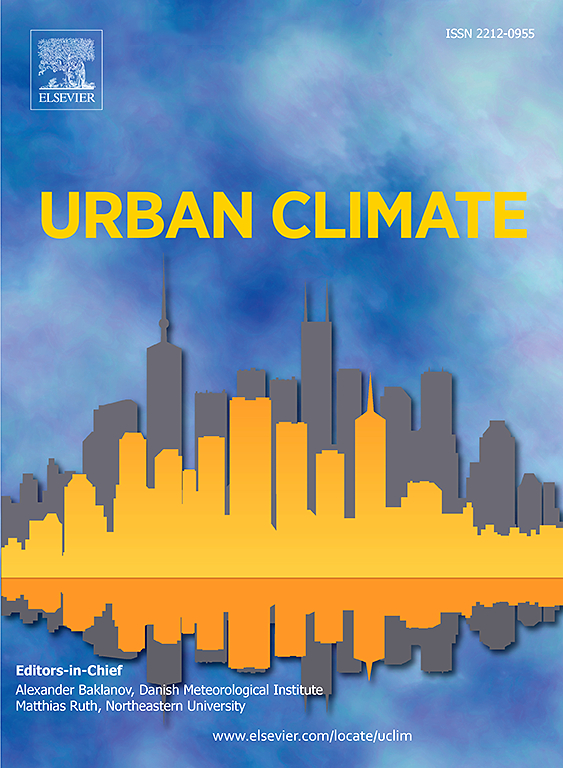Identification and cooling effect analysis of urban ventilation corridors in coastal hilly cities: A case study of Shenzhen
IF 6
2区 工程技术
Q1 ENVIRONMENTAL SCIENCES
引用次数: 0
Abstract
Urban ventilation corridors (UVCs) play a key role in promoting cold air circulation and mitigating the urban heat island effect. This study explores methods to identify UVCs in coastal hilly cities and assess their cooling effects, using Shenzhen as a case study. Based on prevailing wind direction variations, the study area was divided into 14 local ventilation zones. The inverse of the current values derived from the circuit-based approach was classified into 5 levels and used as cost parameters in the least-cost path analysis to identify UVCs. Their cooling effects were evaluated by comparing land surface temperature differences between corridors and surrounding areas. The results show that: (1) The circuit-based current exhibits a stronger correlation with CFD-simulated wind speed (R = 0.756) compared to frontal area density (R = −0.530); (2) UVC cooling effects vary by corridor type and diurnal cycle; (3) during the day, distance from the coastline and mountains enhances cooling in some UVC types, while at night, the opposite trend is observed. This study establishes a framework for UVC identification in coastal hilly cities and deepens understanding of their cooling mechanisms, providing scientific support for urban climate planning.
沿海丘陵城市通风廊道的识别与降温效果分析——以深圳为例
城市通风走廊在促进冷空气循环和缓解城市热岛效应方面发挥着关键作用。本研究以深圳为例,探讨了识别沿海丘陵城市紫外线辐射的方法,并评估其降温效果。根据盛行风向变化,将研究区划分为14个局部通风区。从基于电路的方法中得到的电流值的倒数被分为5个级别,并用作最小成本路径分析中的成本参数,以确定uvc。通过比较廊道与周边地区的地表温差,评价了廊道的降温效果。结果表明:(1)电路电流与cfd模拟风速(R = 0.756)的相关性强于额叶面积密度(R = - 0.530);(2)不同走廊类型和日循环对UVC降温效果的影响不同;(3)在白天,距离海岸线和山脉的距离对某些UVC类型的降温有促进作用,而在夜间则相反。本研究建立了沿海丘陵城市UVC识别框架,加深了对其降温机制的认识,为城市气候规划提供科学支持。
本文章由计算机程序翻译,如有差异,请以英文原文为准。
求助全文
约1分钟内获得全文
求助全文
来源期刊

Urban Climate
Social Sciences-Urban Studies
CiteScore
9.70
自引率
9.40%
发文量
286
期刊介绍:
Urban Climate serves the scientific and decision making communities with the publication of research on theory, science and applications relevant to understanding urban climatic conditions and change in relation to their geography and to demographic, socioeconomic, institutional, technological and environmental dynamics and global change. Targeted towards both disciplinary and interdisciplinary audiences, this journal publishes original research papers, comprehensive review articles, book reviews, and short communications on topics including, but not limited to, the following:
Urban meteorology and climate[...]
Urban environmental pollution[...]
Adaptation to global change[...]
Urban economic and social issues[...]
Research Approaches[...]
 求助内容:
求助内容: 应助结果提醒方式:
应助结果提醒方式:


